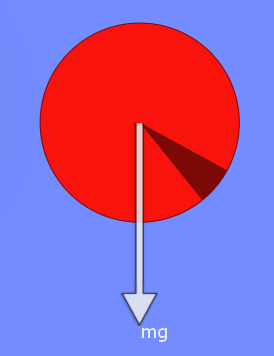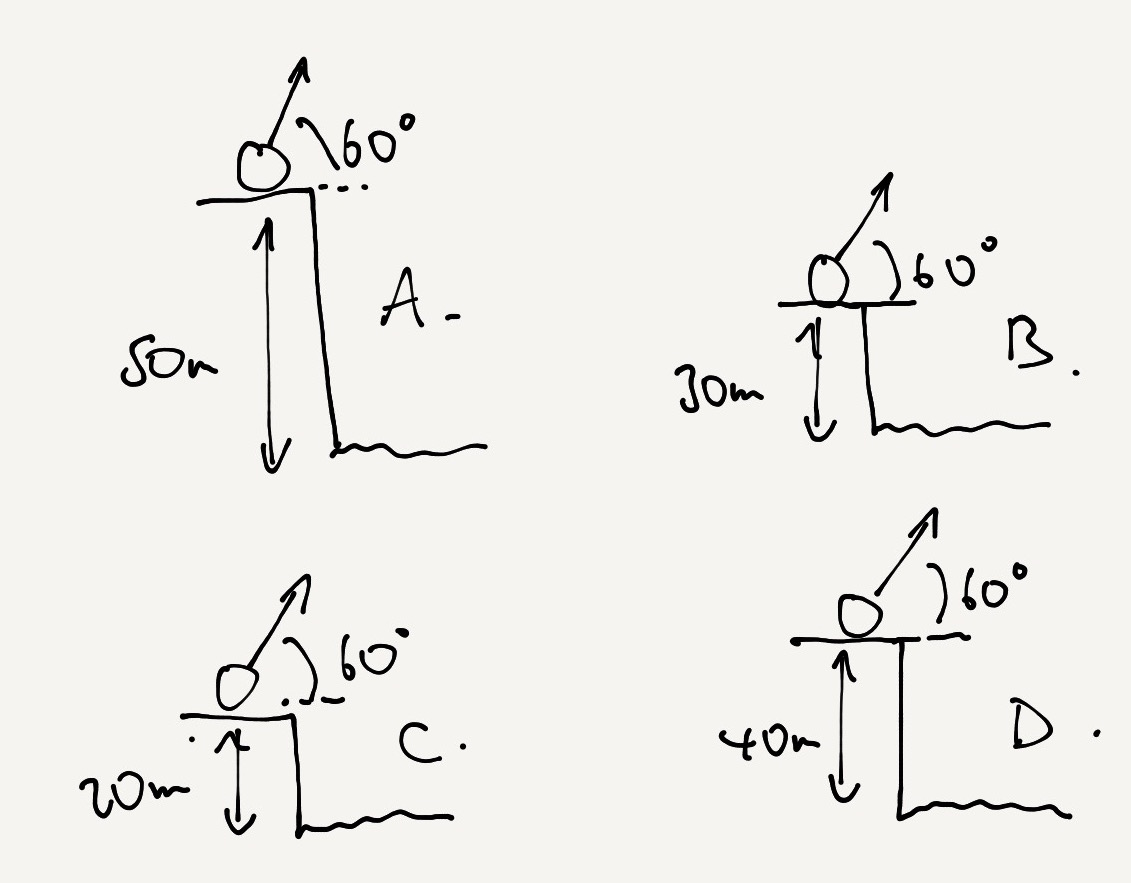 Try flicking an eraser off the edge of a table at the same time as dropping one. You should notice that they reach the ground at the same time. This demonstrates the independence of vertical and horizontal motion for a projectile.
Try flicking an eraser off the edge of a table at the same time as dropping one. You should notice that they reach the ground at the same time. This demonstrates the independence of vertical and horizontal motion for a projectile.
Key Concepts
A projectile is any body in motion, on which the only force acting is weight. The free-body diagram is identical to that on the Acceleration due to gravity page.

This means that:
- vertically, the object has constant acceleration and so suvat equations can be used
- horizontally, the object has zero acceleration and so we can return to an old friend \(\text {speed} = {\text {distance} \over t}\)
We must assume that no horizontal forces (e.g. drag) act at any time. This means that the body is modelled as a particle.
We can think of projectile motion as two problems in one: constant velocity horizontally and constant acceleration vertically. The motions in both directions have one common feature... time!
How much of Projectile motion have you understood?





 Twitter
Twitter  Facebook
Facebook  LinkedIn
LinkedIn